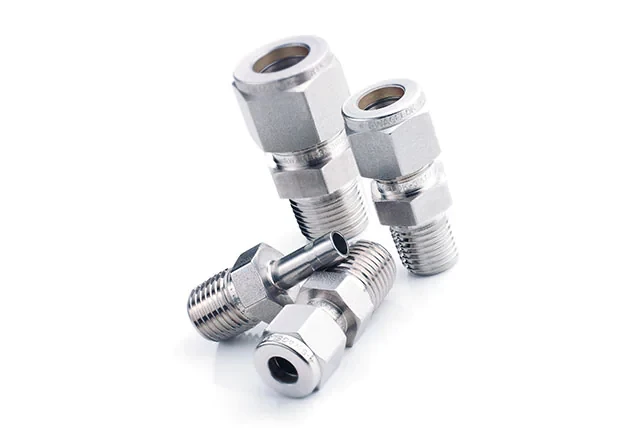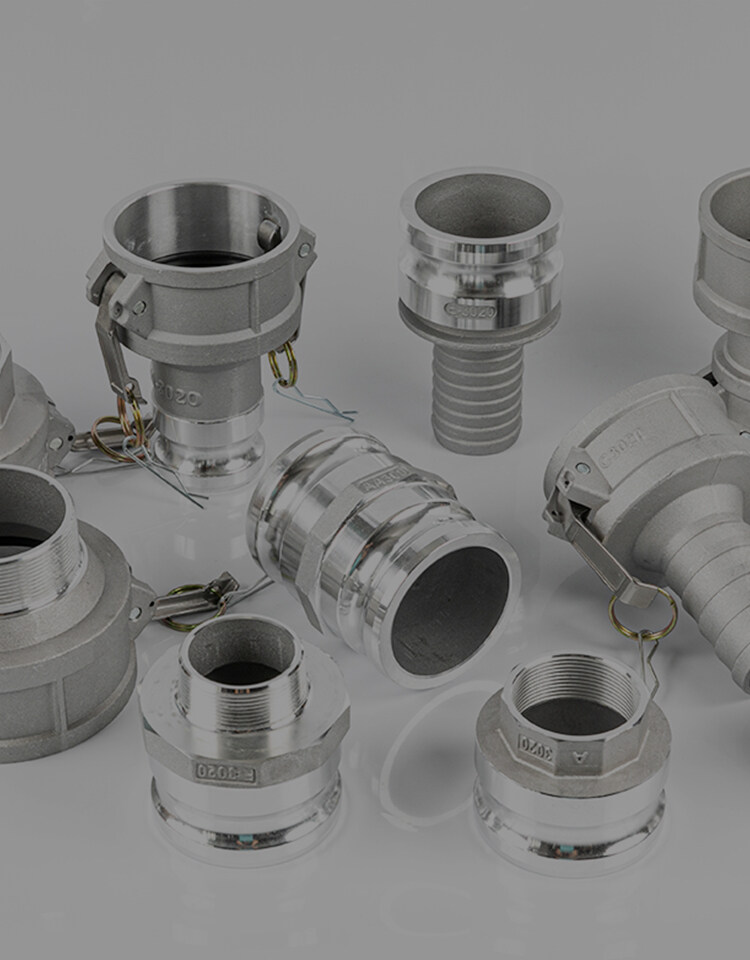Erreur de format d'e-mail
emailCannotEmpty
emailDoesExist
pwdLetterLimtTip
inconsistentPwd
pwdLetterLimtTip
inconsistentPwd

Nouvelles
Ici, vous pouvez décrire un morceau de texte que vous souhaitez exprimer

The Essential Guide to High-Quality Pneumatic Quick Coupling
In the dynamic world of fluid power, the efficiency and reliability of pneumatic systems hinge on the quality of their components. Among these, high-quality pneumatic quick coupling devices stand out as critical for ensuring quick and secure connections. This guide delves into the world of pneumatic quick couplings, highlighting their importance, features, and the various applications they serve.
Chapter 1: Understanding Pneumatic Quick Couplings
Definition and Functionality
Pneumatic quick couplings are devices designed to connect and disconnect fluid lines rapidly without the use of tools. They are essential for systems that require frequent changes of hoses or components, providing a convenient and time-saving solution.
Advantages of Using High-Quality Pneumatic Quick Coupling
Using high-quality pneumatic quick couplings offers numerous benefits, including improved safety, reduced downtime, and minimal fluid leakage. They also contribute to maintaining the integrity of the pneumatic system by providing a secure connection that can withstand the system’s operational pressures.
Common Applications and Industries
Pneumatic quick couplings are used in a variety of industries, such as manufacturing, automotive, and aerospace. They are particularly useful in applications that involve compressed air tools, pneumatic control systems, and any setup where flexibility and rapid changeovers are required.
Chapter 2: The Anatomy of a High-Quality Pneumatic Quick Coupling
Material Selection for Durability and Performance
The materials used in the construction of pneumatic quick couplings, such as stainless steel, brass, or aluminum, play a significant role in their durability and performance. The choice of material depends on the application’s specific needs, including exposure to corrosive substances and the required pressure ratings.
Design Features that Enhance Usability
High-quality pneumatic quick couplings are designed with features that enhance usability, such as push-to-connect mechanisms, color-coded sleeves for easy identification, and ergonomic shapes that facilitate handling.
Sealing Mechanisms to Prevent Leaks
Effective sealing mechanisms are crucial to prevent air leaks, which can compromise system efficiency. Quality pneumatic quick couplings utilize seals made from materials like nitrile or polyurethane, which are selected based on their resistance to wear and compatibility with the system’s operating temperatures and fluids.
Chapter 3: Hydraulic Tube Compression Fittings vs. Pneumatic Quick Couplings
Comparison of Hydraulic and Pneumatic Systems
Hydraulic systems use liquids under high pressure to transmit power, while pneumatic systems use compressed air or gas. Each system has its own set of requirements for connectors, with hydraulic systems typically requiring more robust fittings due to higher pressure levels.
The Role of Tube Compression Fittings in Hydraulic Systems
Tube compression fittings are commonly used in hydraulic systems to connect tubing and hoses securely. They are designed to withstand the high pressures found in hydraulic applications and are not typically used in pneumatic systems.
Why Pneumatic Quick Couplings are the Preferred Choice for Air Systems
Pneumatic quick couplings are specifically designed for air systems, offering quick and efficient connections and disconnections, which is essential for systems that require frequent access or modification.
Chapter 4: The Global Landscape: China Hydraulic Quick Coupler Innovations
The Rise of China in the Pneumatic Quick Coupling Market
China has become a significant player in the pneumatic quick coupling market, with manufacturers investing heavily in research and development to produce innovative and high-quality products.
Innovations and Quality Improvements in China Hydraulic Quick Coupler Manufacturing
Chinese manufacturers are introducing innovations such as new sealing technologies and materials that enhance the performance and reliability of their quick couplers, setting new standards in the industry.
How Chinese Products are Shaping Global Standards
With their focus on quality and innovation, Chinese products are influencing global standards for pneumatic quick couplings, driving improvements in performance and safety across the industry.
Chapter 5: OEM Hug Type Quick Coupler: Custom Solutions for Unique Needs
The Concept of OEM Hug Type Quick Coupler
A hug type quick coupler is a specialized fitting designed to provide a secure and rapid connection for hoses and pipes in a pneumatic system. Unlike standard couplings, the hug type features a unique locking mechanism that ‘hugs’ the connector, ensuring a tight seal and easy engagement and disengagement. This design is particularly beneficial in applications where frequent connection changes are necessary or where space constraints make traditional tools difficult to use.
Benefits of Customized Quick Coupling Solutions
Customized quick couplers offer several advantages. They can be tailored to withstand specific pressures, temperatures, and chemical exposures based on the operational environment. Custom solutions also allow for unique shapes and sizes to fit into unconventional spaces or align with proprietary systems. This level of customization ensures optimal performance, reduces the risk of leakage, and enhances overall system reliability.
Case Studies: Success Stories of OEM Implementations
Many industries have benefited from the implementation of custom OEM hug type quick couplers. For example, in the automotive industry, a manufacturer was able to streamline their assembly line with quick couplers that reduced tool changeover time, increasing productivity. In the aerospace sector, custom couplers were designed to handle the extreme conditions of flight, ensuring the safety and reliability of critical systems.
Chapter 6: Selecting the Right High-Quality Pneumatic Quick Coupling
Factors to Consider When Choosing a Pneumatic Quick Coupling
Selecting the right pneumatic quick coupling involves considering factors such as the material compatibility with the media being transferred, the size and shape for the application, and the coupling’s ability to withstand the system’s pressure and temperature ranges. Additionally, the ease of use and the coupling’s ability to prevent accidental disconnections are important considerations.
Understanding Pressure Ratings and Flow Requirements
Pressure ratings and flow requirements are critical specifications for any pneumatic quick coupling. The chosen coupling must be able to handle the maximum operating pressure of the system without risk of failure. Similarly, the coupling must provide an adequate flow rate to ensure the system operates efficiently without causing excessive pressure drops.
The Importance of Compatibility and Interchangeability
Compatibility with existing equipment and interchangeability with other products are essential for maintaining flexibility and reducing inventory costs. A high-quality pneumatic quick coupling should be designed to fit with standard hose and pipe sizes and be interchangeable with couplings from other manufacturers when possible.
Chapter 7: Hydraulic Tube Fittings Manufacturers: A Synergistic Relationship
The Interplay Between Pneumatic Quick Couplings and Hydraulic Tube Fittings
While pneumatic and hydraulic systems operate on different principles, the components used in each system often share similar design challenges. Hydraulic tube fittings manufacturers understand the importance of creating components that can seamlessly integrate with pneumatic quick couplings, ensuring a leak-free and efficient system.
How Manufacturers are Bridging the Gap Between Hydraulic and Pneumatic Components
Manufacturers are increasingly designing components that can be used in both hydraulic and pneumatic systems. This approach simplifies the supply chain and reduces the need for specialized parts, allowing for a more streamlined inventory and easier maintenance.
Collaborations that Enhance System Efficiency
Collaborations between manufacturers and pneumatic quick coupling providers are leading to innovations that enhance system efficiency. These partnerships are resulting in the development of multi-functional components that offer improved performance and reliability.
Chapter 8: Maintenance and Troubleshooting for Pneumatic Quick Couplings
Routine Maintenance Tips for Longevity
Regular inspection and cleaning of pneumatic quick couplings can prevent the buildup of contaminants that may lead to leaks or malfunctions. Applying appropriate lubricants can also extend the life of the coupling by reducing wear on moving parts.
Common Issues and Troubleshooting Techniques
Common issues with pneumatic quick couplings include leaks, difficulty in connecting or disconnecting, and reduced flow rates. Troubleshooting techniques often involve checking for damaged seals, ensuring proper alignment, and verifying that the coupling is free from debris.
When to Replace Your Pneumatic Quick Coupling
Pneumatic quick couplings should be replaced if they show signs of significant wear, corrosion, or if they have been subjected to excessive force or pressure. Regular maintenance schedules can help identify when a coupling is nearing the end of its service life.
Chapter 9: Future Trends in High-Quality Pneumatic Quick Coupling Technology
Technological Advancements on the Horizon
The future of pneumatic quick coupling technology is likely to see advancements in materials that offer greater durability and resistance to extreme conditions. Smart couplings with integrated sensors that monitor pressure, temperature, and flow rates in real-time are also on the horizon.
The Role of Sustainability in Quick Coupling Manufacturing
Sustainability is becoming increasingly important in manufacturing. Pneumatic quick coupling manufacturers are exploring ways to reduce their environmental impact by using recycled materials, improving manufacturing processes, and designing products for easier recycling at the end of their life.
Predictions for the Pneumatic Quick Coupling Market
The market for pneumatic quick couplings is expected to grow as industries continue to seek solutions that improve efficiency and safety. The demand for custom and interchangeable couplings is likely to increase, along with the need for components that can be easily integrated into both pneumatic and hydraulic systems.
Conclusion:
The comprehensive exploration of high-quality pneumatic quick couplings underscores their pivotal role in the efficiency and reliability of modern pneumatic systems. From the robustness of materials to the ingenuity of design, these components are the linchpins of fluid power technology across diverse industries. As we have seen, the right coupling can dramatically enhance system performance, minimize maintenance requirements, and bolster safety protocols. The synergy between pneumatic and hydraulic components, driven by innovative manufacturers, is creating a seamless integration of systems, paving the way for a more unified approach to fluid power.
The advancements on the horizon promise smarter, more sustainable, and highly adaptable quick coupling solutions, reflecting the industry’s commitment to continuous improvement and environmental responsibility. As the market for these components grows, the future holds a landscape where high-quality pneumatic quick couplings are not just a standard but a necessity for industrial progress and operational excellence. The journey through the world of pneumatic quick couplings reveals a clear message: investing in quality is not just a choice but a strategic imperative for any operation seeking to thrive in the competitive and ever-evolving realm of fluid power.

